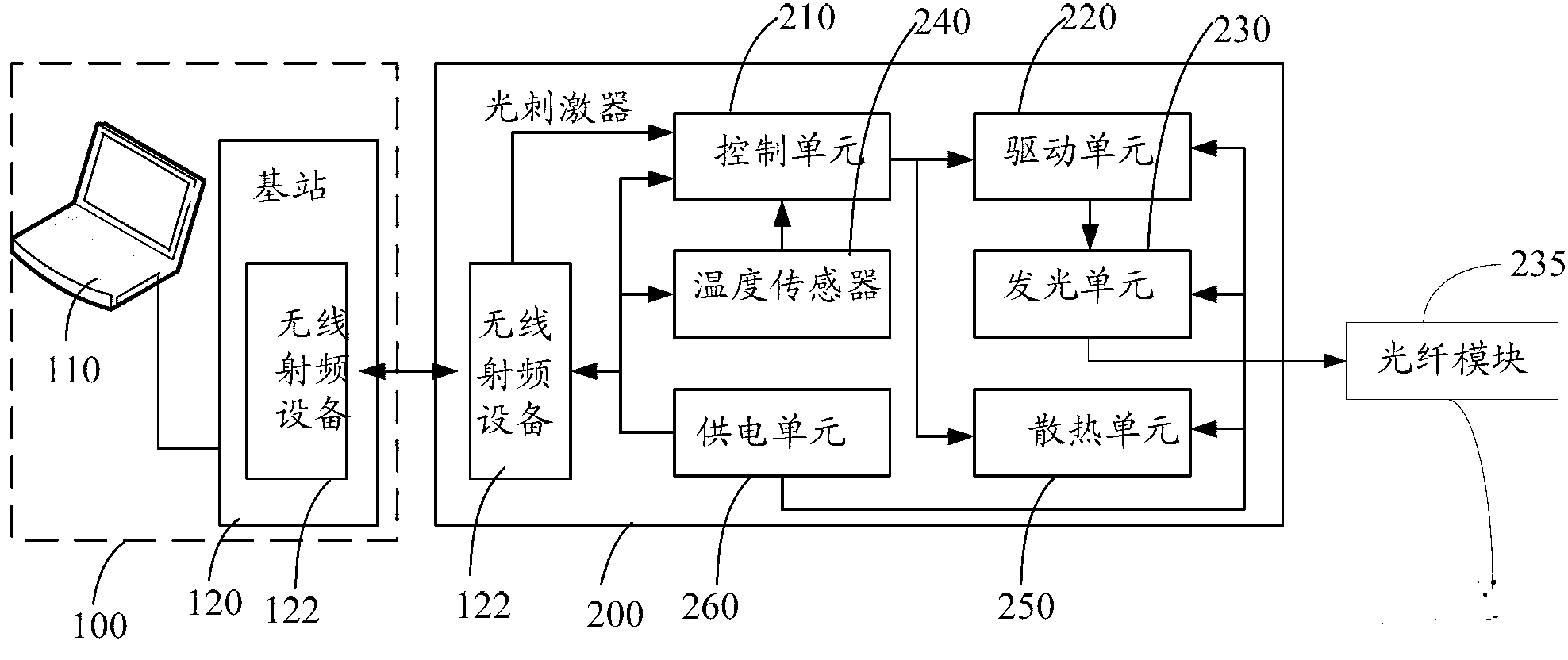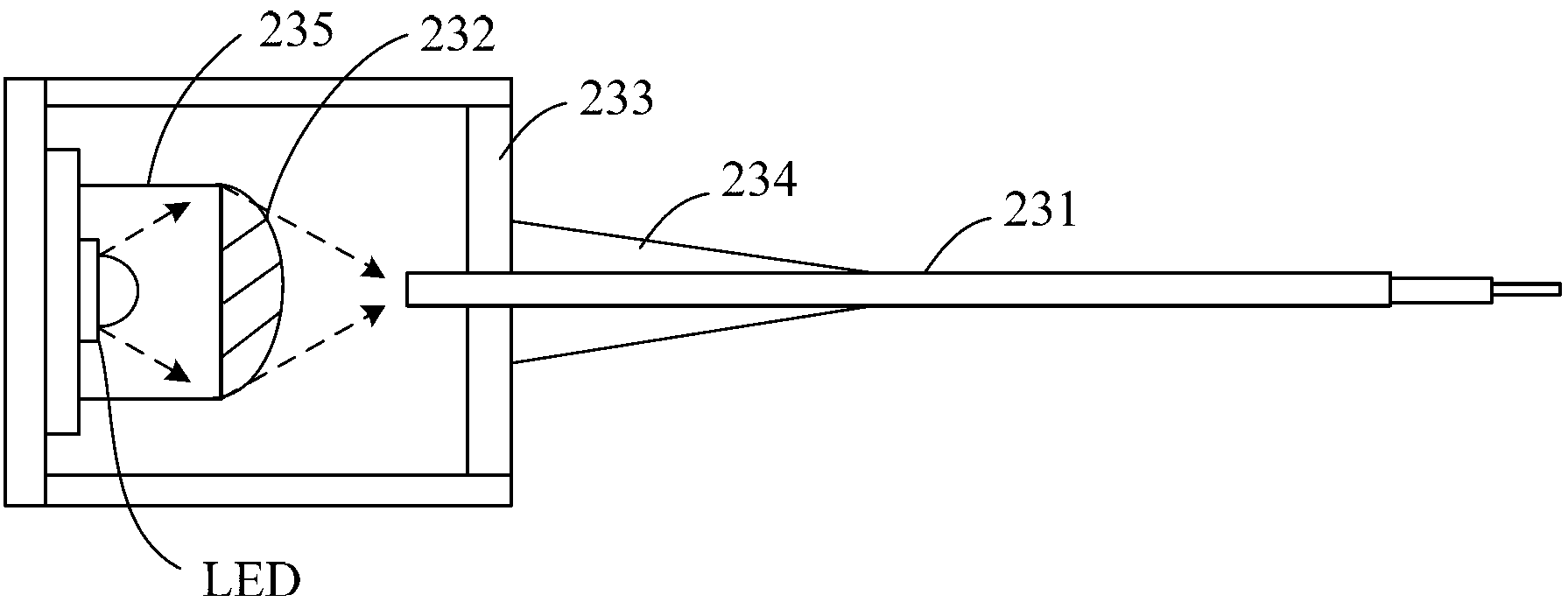Wireless remote control photostimulation system for animals
A technology of wireless remote control and light stimulation, applied in the field of medical devices, can solve the problems of increasing the risk of experiment failure, heat accumulation, damage to brain tissue, etc., and achieve the effects of reducing the risk of experiment failure, system reliability, and ensuring effectiveness
- Summary
- Abstract
- Description
- Claims
- Application Information
AI Technical Summary
Problems solved by technology
Method used
Image
Examples
Embodiment Construction
[0026] "Optogenetic Technology" technology (Optogenetic Technology), using a viral vector (usually lentivirus or adenovirus) to introduce a gene (ChR2) that can encode a light-sensitive cation channel protein cloned from the green alga Chlamydomonas reinhardtii Expressed in a specific cell subpopulation, when this channel protein is stimulated by blue light with a wavelength of 472nm, Na + The entry of ions into the cell causes the depolarization of the cell membrane and excites the cell. In addition, there is another light-regulated chloride ion pump protein gene NpHR extracted from Natruonobacterium pharaonis, which is sensitive to yellow light with a wavelength of 593nm. Under the stimulation of yellow light, the chloride ion channel protein will make Cl - Entering the cell repolarizes the cell membrane, thereby returning the cell to rest, so that the use of alternating blue or yellow light can control cell activity at the level of specific cell subpopulations. This techn...
PUM
 Login to View More
Login to View More Abstract
Description
Claims
Application Information
 Login to View More
Login to View More - R&D
- Intellectual Property
- Life Sciences
- Materials
- Tech Scout
- Unparalleled Data Quality
- Higher Quality Content
- 60% Fewer Hallucinations
Browse by: Latest US Patents, China's latest patents, Technical Efficacy Thesaurus, Application Domain, Technology Topic, Popular Technical Reports.
© 2025 PatSnap. All rights reserved.Legal|Privacy policy|Modern Slavery Act Transparency Statement|Sitemap|About US| Contact US: help@patsnap.com



